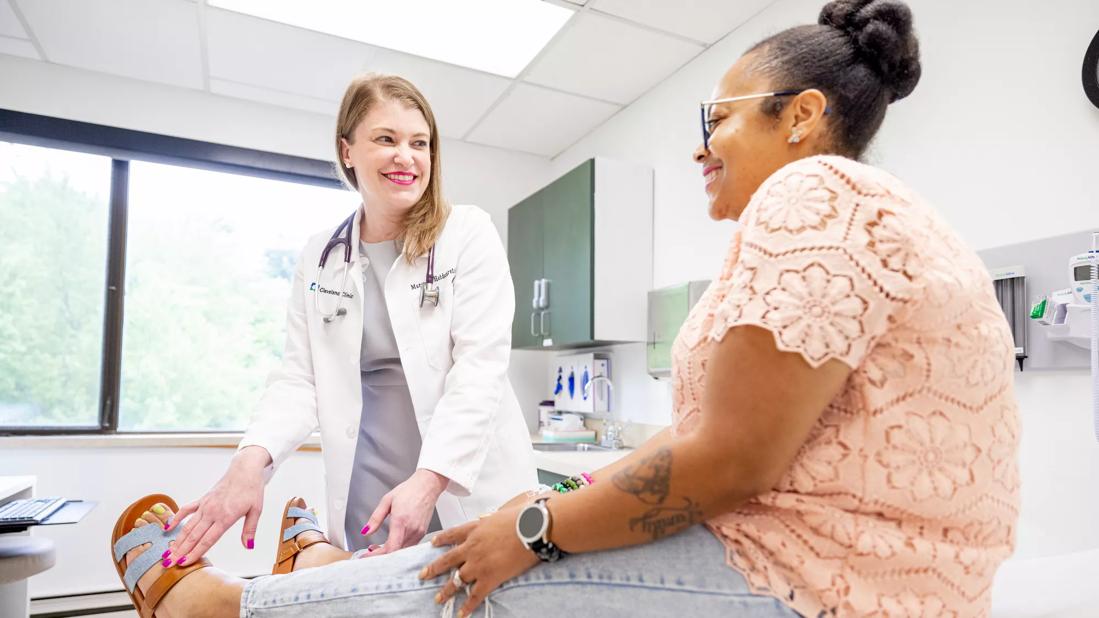Growth and advancement in the 21st century

By Maureen Schaupp, Associate Chief Nursing Officer, Advanced Practice Nursing, Nursing Quality and Practice
Advertisement
Cleveland Clinic is a non-profit academic medical center. Advertising on our site helps support our mission. We do not endorse non-Cleveland Clinic products or services. Policy
Advanced practice nursing has become a highly desirable career. At Cleveland Clinic, the number of advanced practice registered nurses (APRNs) has grown from 450 in 2009 to nearly 2,400 today. Nationally, the Bureau of Labor Statistics predicts a 45% growth of APRNs between 2019 and 2029, which is a higher percentage than the average for all occupations.
APRNs are extremely valuable to today’s healthcare system. They hold critical roles in addressing the rise in chronic medical conditions, expanding access to healthcare and meeting population health needs, especially for aging or under-resourced populations.
The move toward advanced practice nursing first gained momentum in the 1990s, although the informal role of the APRN can be dated to the earliest days of the nursing profession. The first nurse to provide patients with anesthetics did so in 1861 during the Civil War.
As the need for APRN’s expands, it can be helpful to look back at how the profession was established within the nursing ranks at Cleveland Clinic.
Advanced practice nurses were first united at Cleveland Clinic in 1999 when the Office of Advanced Practice Nursing was established. The office provided resources, offered education, promoted the appropriate use of APRNs and ensured adherence to the rules and regulations of the Ohio Board of Nursing and other regulatory agencies.
By 2010, a national trend was emerging for health systems to better leverage the skill and practice ability of APRNs. It was driven by:
Advertisement
As patient volumes and the demand for advanced care providers increased, Cleveland Clinic leaders worked to create a new advanced practice nursing model. It was integrated into the organization’s team-based approach to care and designed to meet the current and future needs of healthcare.
With more than 1,000 APRNs in 2016, Cleveland Clinic was the largest employer of APRNs in Ohio and one of the largest in the country. That year, the health system named its first Associate Chief Nursing Officer for Advanced Practice Registered Nursing and created an advanced practice provider governance structure to which all APRNs and physician assistants (PAs) reported. It also:
Cleveland Clinic established a 12-month APRN/PA onboarding program called Transition to Practice to further train advanced practice providers (clinically and didactically) to transition into clinical decision-making roles. It focused on refining the skills and knowledge of new graduates as well as experienced providers who were changing specialty areas.
Other APRN education, training and support initiatives included:
Advertisement
Between 2011 and 2020, advanced practice nurses in Ohio obtained the ability to prescribe Schedule II medications, but with an exclusionary formulary. The Certificate of Authority and Certificate to Prescribe were aligned with APRN licensing and the title of APRN was officially adopted.
When the Office of Advanced Practice Nursing was formed in 1999, an APRN Council was also created. Today the council aims to promote professional practice, advocacy, recognition and support.
One of the council’s newest initiatives is the APRN Professional Development Pathways Program. It’s a year-long program that coordinates, enhances and facilitates APRNs’ portfolios and professional development. Participants select a key domain that aligns with their planned career path: research, leadership, education or quality. In 2019, the council also established a preceptor committee to support the education and resource efforts APRNs contribute to local graduate nursing students.
To date, Cleveland Clinic APRNs have provided more than 100,000 clinical hours in support of students from more than 60 schools.
Advertisement
Advertisement

How hospitals can weave ethics into daily nursing practice to strengthen patient-centered care

Mobility carts provide exercises and tools

Nurse researchers explore the relationship between readmission risk scores and acute care transfers

Guiding nurses amid a constantly evolving healthcare landscape

Ideation session generates solutions to medication administration errors

Caregivers spearhead changes that improve patient care, shape hospital culture

Building a culture that supports, engages and empowers nursing staff

Nurses harness cutting-edge technology as a bridge to healing